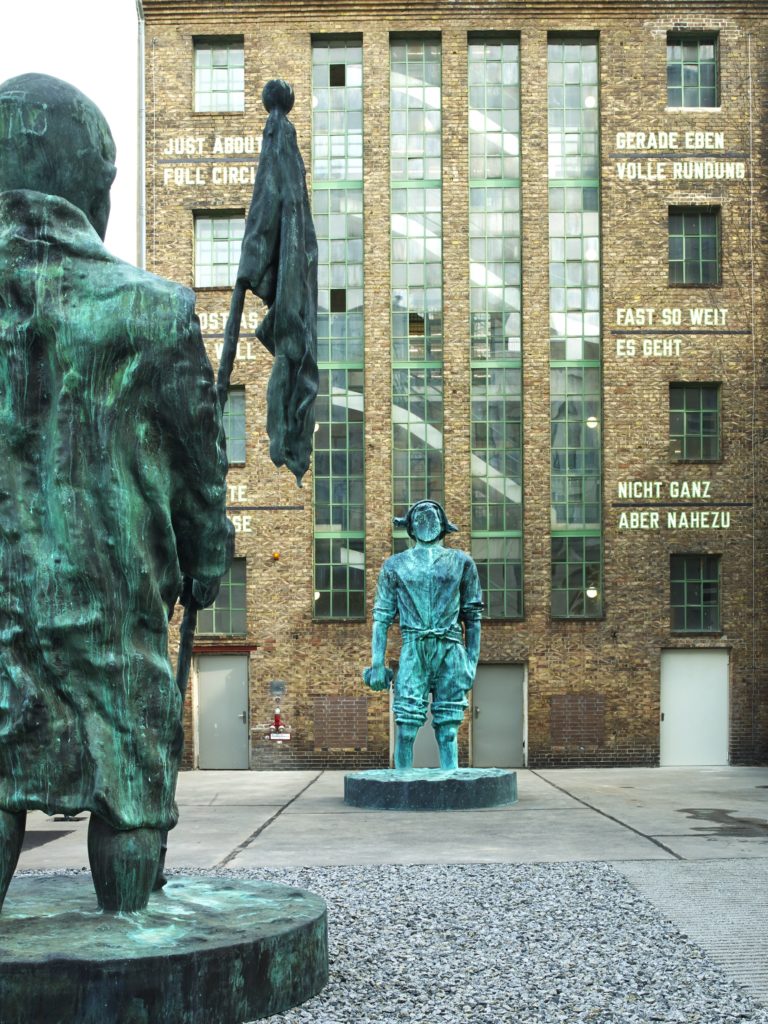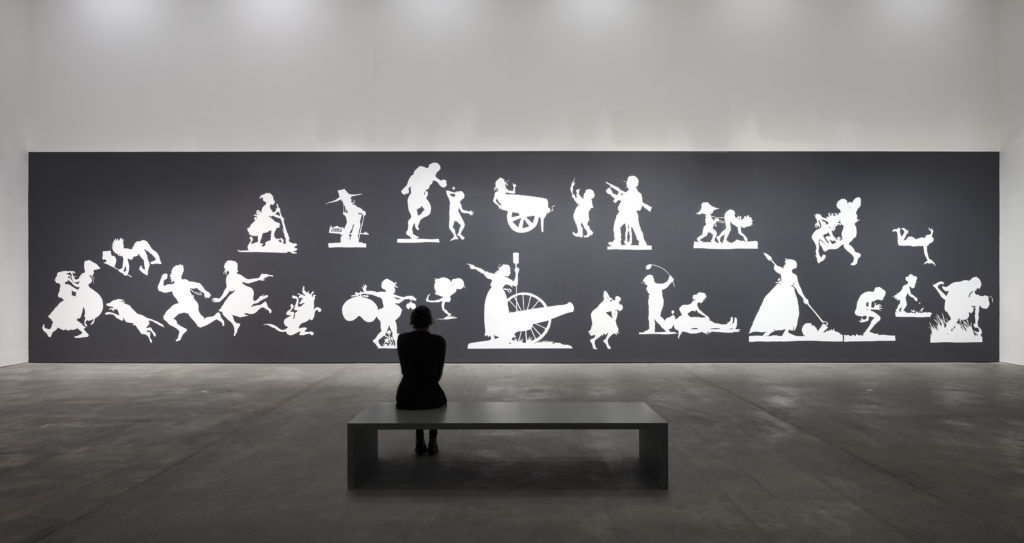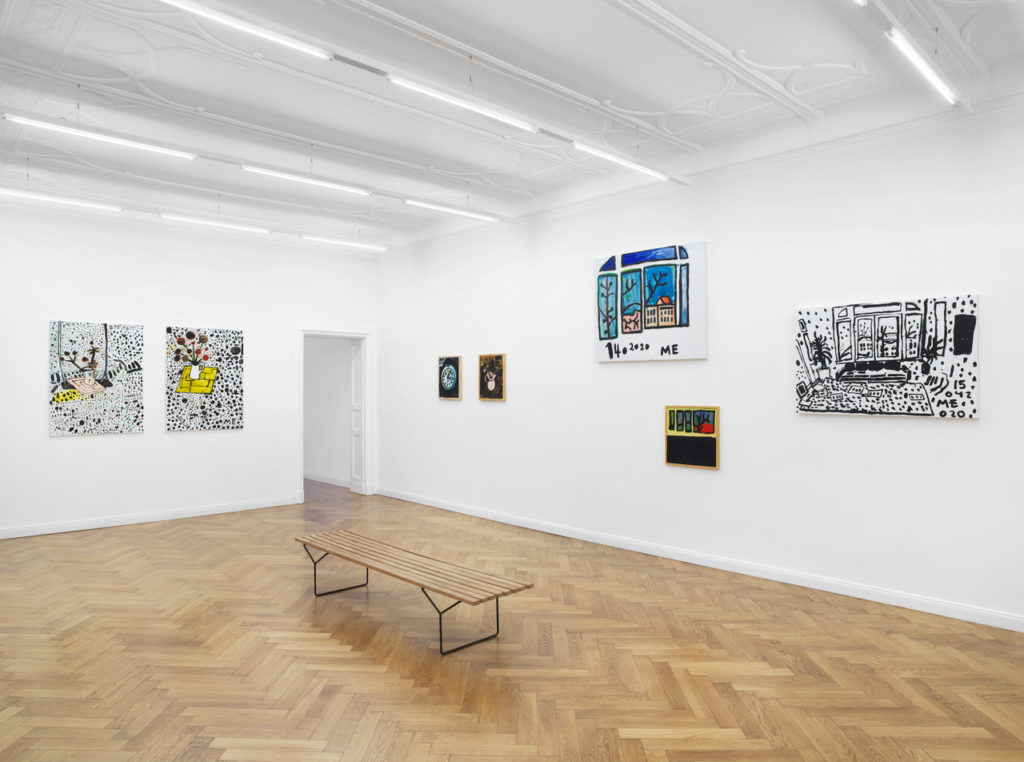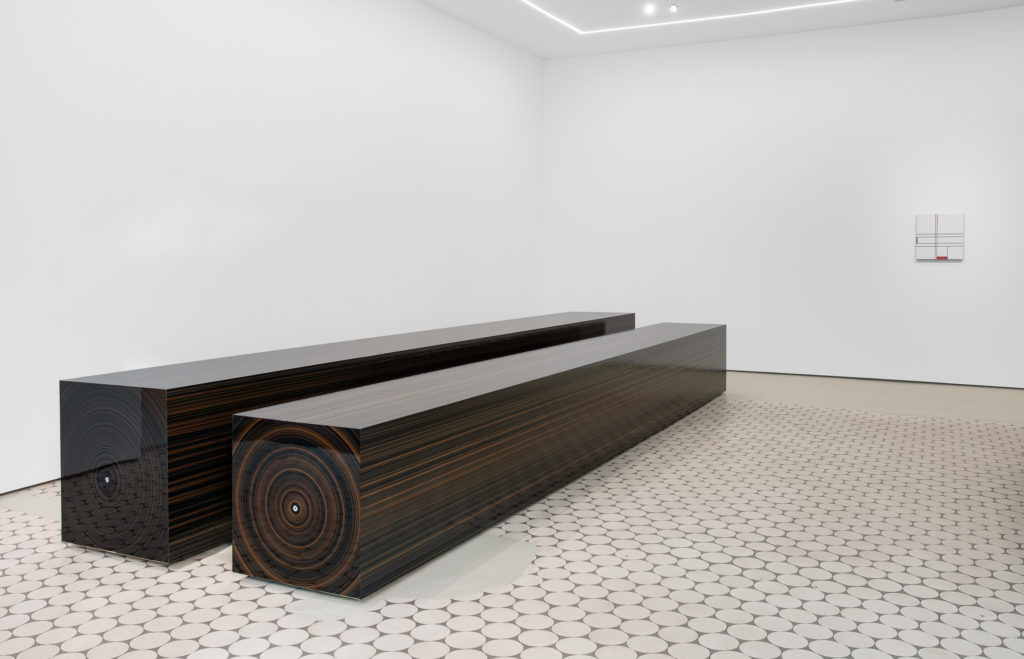Galleries
What’s It Like to See Art in the Era of Social Distancing? We Crawled Berlin’s Newly Reopened Gallery Scene to Find Out
There's a cautiously optimistic buzz in the air in the German capitlal.

There's a cautiously optimistic buzz in the air in the German capitlal.

Kate Brown

“Just about full circle,” Lawrence Weiner muses in a towering permanent installation, written in his standard XL typeface, outside Konrad Fischer Galerie in Berlin. “Not quite, but close.”
It’s an old piece, but it sums up quite well how things feel as I sanitize my hands and pull on my mask to step into a gallery again for the first time in months. Same old, just about.
The Berlin art world has reopened, and dealers are feeling a general sense of relief to be airing out their spaces again. Invitations to press conferences and exhibitions, which began with a trickle, have turned into a groundswell. The general messaging? Please come, but not all at once.
The industry is returning to some semblance of normal, but the situation is far from usual, nor is it secure. Dealers I spoke to are not pretending otherwise. Fairs, including Art Basel and Art Cologne, are still postponed. And gallerists who normally have a year’s worth of shows lined up shrug when I ask what will be on view in September, when Berlin Gallery Weekend will now take place after having been postponed from May.
“We are not quite sure yet,” says Claudia Pasko of Konrad Fischer. “It all depends.”
Tentativeness is the new normal. There is no set end date yet for the gallery’s current exhibition of triumphant sculptures by Thomas Schütte, which includes two absolutely breathtaking 14-foot-tall bronze works in the gallery’s courtyard. The show opened earlier this month, on May 2, and the gallery says many German collectors have made appointments to visit the gallery in person.

Kara Walker, THE SOVEREIGN CITIZENS SESQUICENTENNIAL CIVIL WAR CELEBRATION (2013). Sprüth Magers, Berlin. Photography Timo Ohler. Courtesy Sprüth Magers and Sikkema Jenkins & Co.
Appointments are a big part of the new normal. Even as the country beings to reopen, German officials are closely watching the infection rate, and social distancing measures will remain in place for the foreseeable future. “We have to be careful that this thing doesn’t slip from our grasp,” German Prime Minister Angela Merkel said in a press conference on Wednesday.
Peres Projects, for example—which has just reopened with a show by the US artist Richard Kennedy—will stagger its reception throughout the day, and will only allow two visitors in at a time.
“In order to minimize possible waiting times to enter the gallery and to limit contact, we are asking people to preschedule their visits by calling the gallery,” Javier Peres says. “If we have too many people, they will have to wait outside to enter.”
Some galleries that already reopened ran out of appointments. Slots to see Kara Walker’s solo exhibition alongside a concurrent show by US sculptor Richard Artschwager were completely booked out last weekend at Sprüth Magers. The gallery is allowing two people at a time to enter for 30-minute visits. König Galerie is doing the same (and is also designed editioned masks by artists that will be sold for charity; funds will go to an organisation to support young artists).

Marcel Eichner at Philipp Haverkampf. Courtesy the gallery.
But because travel is depressed and visitors are not coming to Berlin in high numbers, some dealers are holding off on their prime shows.
A museum-quality exhibition of historic works by Richard Serra, Imi Knoebel, and Stanley Whitney, among others, that was planned for Nordenhake has been postponed, and will now probably open next year. Another exhibition, by Rebecca Horn at Galerie Thomas Schulte, has been pushed to 2021.
“Berlin was never exactly a high-traffic area for collectors,” one gallerist told me as we stood at a distance, face masks on. Dealers seem wary of wasting their shows on what looks to be a lukewarm market, even through the fall. “We know that this September will be a very German crowd of collectors, and that not too many collectors will be traveling.”
Yet transactions are still taking place, even if buyers appear to be moving cautiously. “Selling is a slow process these days,” says dealer Philipp Haverkampf, who opened his gallery on Friday, April 30, with a show of works by painter Marcel Eichner. Works are available for between €3,500 and €15,000. “Deals are still happening when people really want something, even when they consider themselves not to be in a buying mood.”
Elsewhere, dealer Juerg Judin opened his space with a show by Hugo Wilson that was originally planned to debut “with a bang during Berlin Gallery Weekend,” Judin says. But even with a quieter, softer launch, the exhibition has found an audience.
“The fact that the show is almost entirely sold out makes us cautiously optimistic about the viability of our segment of the art market,” Judin says.

Installation of Gregor Hildebrandt at WENTRUP. Photo: Trevor Good. Courtesy the artist and WENTRUP.
In this peculiar time, which is so full of uncertainties, at least one other thing is sure: the experience of looking at art in person is not going anywhere.
“You cannot completely digitize the viewing of artworks,” says Eike Dürrfeld of the Thomas Schulte gallery. “It won’t tempt you to discover something new. There is a renewed curiosity returning—you can sense it.”
The excitement is echoing around town. “I think art enthusiasts and collectors are simply happy to visit galleries and see art again, now that restrictions are being carefully lifted in the city,” says dealer Jan Wentrup. His gallery has reopened with a group show of works—many of them made in lockdown—by Sophie von Hellerman, Gregor Hildebrandt, and this year’s Käthe Kollwitz Prize winner, Timm Ulrichs.
“It was important for us to show our artists, collectors, and the art world that life goes on and in Germany already can go on, certainly under new regulations, but with the possibility to present exhibitions to the public.”
Personally, I didn’t attend any recent openings, and I don’t think I will soon. It still feels too risky. And anyway, having a gallery all to yourself on a non-opening day, which is now best practice, was long my preferred way to see shows.
Still, it is an absolute pleasure to hear the uncanny echo of my heels as I walk slowly around Schütte’s massive bronze busts at Galerie Konrad Fischer. And catching my reflection in a glass pane before an erotic portrait by Robert Mapplethorpe at Galerie Thomas Schulte pulls me into the drama of the artwork in a way that neither AR nor VR are able to imitate. That’s why looking at art in person won’t be going away. As Dürrfeld put it: “The art world will never pull through without physical galleries.”